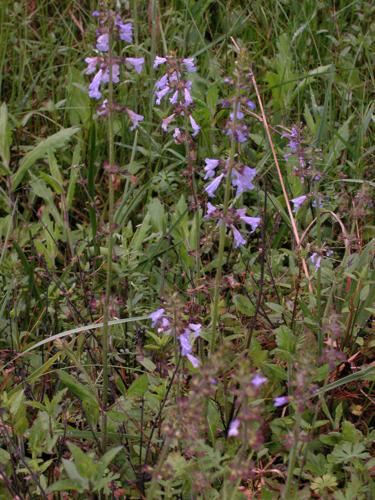"Here's flowers for you;
Hot lavender, mints, savoury, marjoram…"
— A Winter's Tale, act 4, scene 4
The Bard was obviously fond of flowers. One of his favorite plant families was the mint family; I think it's my favorite family, too.
The four plants mentioned by Perdita in Shakespeare's story are aromatic herbs which we classify as members of the mint family, or Lamiaceae. There are many additional members. All of these species groups, or genera, share a number of features, including a square – or at least squarish – stem, and opposite leaves – two together at a single node.
The flowers are frequently arranged in apparent whorls or rings along the upper part of the stem, and the petals are always fused together. Most members of the family have a corolla featuring an upper and a lower lip, the latter structure sometimes affording a good landing platform for visiting bees. A single flower will contain either two or four stamens, depending on the genus.
Each flower is capable of producing four dry, one-seeded nutlets. The foliage is frequently – not always – pungent and stinky, or pleasantly aromatic; most of these smells come from volatile oils produced by tiny glands on the foliage and/or stems. Of course, some members of this famous plant family don’t have much of a smell. And although this family offers a number of beautiful wildflowers, some of the species are aggravating weeds. Maybe you’ve heard of “Florida betony,” Stachys floridana.
Many gardeners will correctly recognize our Mystery Plant as a species of sage, in the genus Salvia. This is probably the largest genus within the mint family, with perhaps over 800 species found worldwide. (Except for Australia.) The ancient Romans valued various species of Salvia as important medicinal herbs, in addition to the culinary usefulness of some. In fact, the name Salvia comes from the Latin verb meaning "to heal." The genus is highly valued for gardens: corollas range among different species from some of the bluest of blues to white, pink, peach, violet and brilliant red.
Now our Mystery Plant is an eastern plant, commonly seen in various places from New York through much of Florida, and over to Texas. It's a perennial, without much scent at all, and although it is a native species, is sometimes thought of as a weed. My neighbor has some in her lawn blooming now, and the plants seem to be spreading toward our yard.
It has a series of flat, very handsome leaves, commonly blotched with deep red, and forming a rosette on the ground. The blades of these lower leaves are narrowed a bit about halfway up, producing the shape of a fiddle. Or a lyre. Which looks like a fiddle. Sort of. (Photo by Linda Lee.)
[Answer: “Lyre-leaved sage”, Salvia lyrata]




